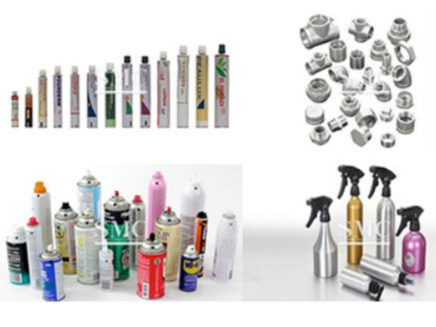
Aluminum (Al) is a remarkable lightweight metal widely distributed in nature. It is abundant in compounds, with an estimated 40 to 50 billion tons of aluminum in the earth's crust, making it the third most abundant element after oxygen and silicon.
Known for its excellent properties, aluminum occupies an important position among various metal varieties. Due to its unique chemical and physical properties, it is listed as the metal of choice over other metals. Notably, aluminum is known for its light weight, long-lasting strength, excellent ductility, electrical and thermal conductivity, and excellent resistance to heat and nuclear radiation.
These unique qualities have paved the way for aluminum to be widely used in different industries. It revolutionized the aviation industry and plays a vital role in aircraft manufacturing as its lightweight properties help reduce fuel consumption and improve overall efficiency. Additionally, its strength and flexibility make it an excellent material for building strong and aerodynamic aircraft.
The versatility of aluminum is not limited to aviation, but permeates every field. In the automotive industry, the use of aluminum in vehicle manufacturing has gained enormous attention. The metal's lightweight nature improves fuel efficiency and enhances performance, ultimately facilitating sustainable transportation.
In addition, aluminum's impressive thermal conductivity enables efficient heat dissipation, making it an indispensable component in the production of heat sinks for electronic devices. In addition to conductivity, this ensures the safe and optimal operation of electronic equipment, avoiding potential overheating issues.
Another highlight of aluminum's unique properties is its corrosion resistance. Unlike many other metals, aluminum forms a thin protective oxide layer when exposed to air. This characteristic makes it ideal for applications in marine environments as it can withstand the corrosive effects of salt water and various compounds.
Additionally, aluminum's recyclability and low energy requirements for extraction make it an environmentally friendly choice. With the increasing awareness of sustainable development, the demand for aluminum in various industries continues to grow. Its recyclability reduces the need for primary aluminum production, saving energy and reducing greenhouse gas emissions.
However, despite its many advantages, the production and processing of aluminum presents its own challenges. Extracting aluminum from ore requires large amounts of energy and resources, resulting in greenhouse gas emissions. Additionally, the mining process can have adverse environmental impacts, including habitat destruction and soil degradation.
Efforts are being made to address these issues and improve aluminum production efficiency. Research and development of sustainable extraction methods are ongoing, such as using renewable energy sources and optimizing recycling processes to minimize environmental impact.
In conclusion, the unique chemical and physical properties of aluminum, including its light weight, strength, ductility, electrical and thermal conductivity, heat resistance and radiation resistance, make it a versatile and essential metal in various industries. Its applications in fields such as aviation, automobiles, electronics and ships have transformed these industries and contributed to sustainable development. Ongoing research and innovation are essential to further improve the efficiency and sustainability of aluminum production and ensure its continued benefit to humanity.





Related Comments